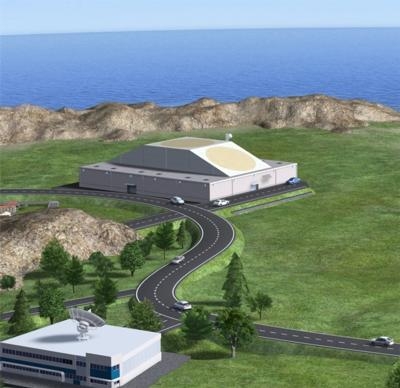Thu, Sep 13, 2012
System To Be Designed For Early Detection Of Space Debris
The European Space Agency (ESA) is developing a new radar as part of the Agency’s Space Situational Awareness program. The radar will test future debris monitoring techniques, helping European satellite operators avoid space hazards and increase safety in Earth orbit. ESA and France’s ONERA – Office National d’Etudes et Recherches Aérospatiales – research center have signed a $5.1 million contract that will see the French organization and five industrial partners in France, Spain and Switzerland design a test surveillance radar and develop a demonstrator model. Work begins this month.

“The agreement significantly increases European industrial competitiveness and capabilities in this field,” says Nicolas Bobrinsky, Head of ESA’s Space Situational Awareness (SSA) Preparatory Program. Early debris detection is crucial to help warn satellite operators of collision risks and enable avoidance maneuvers to be made. The radar will make use of ‘bistatic’ technology, following an earlier, parallel contract between ESA and Spain's Indra Espacio SA to develop a test radar that uses the ‘monostatic’ approach.
“Both radar designs will help test and validate techniques for observing orbital debris by conducting comparative testing,” says Gian Maria Pinna, Ground Segment Manager in ESA’s SSA office. “The two radar demonstrators will be part of an initial complex network of sensors, which will also make use of optical telescopes and data processing centers for observation of debris objects in all orbital regions. While radar technology works most efficiently for the detection of objects in low and highly elliptical orbits, optical technology is better for objects in medium and geostationary orbits.”
In a monostatic radar, the emitter and the receiver are at the same spot and the energy is emitted in discrete pulses. In a bistatic radar, the emitter and receiver are set up at separate locations and the energy is emitted continuously. For the new test radar, the emitter will be located at a former airport near Crucey-Villages, about 100 km west of Paris, while the receiver will be near Palaiseau, to the south of Paris.
The new contract highlights the strong support to European industry provided through ESA’s SSA activities, which began in 2009. “For the development of radar technology alone, the new contract brings the total number of contractors involved to eight, spread across four Member States,” says Nicolas. “This represents a significant return on investment and highlights the abilities of European industry to play an active and autonomous role in developing essential SST assets to help secure safe use of space.”
(Artist's concept of ESA space debris radar provided by ESA)
More News
“My father mastered a unique trio of skills, being an exceptionally good mechanical engineer, electrical engineer, and astute businessman. He set the bar high for himself and>[...]
Standard Terminal Arrival (STAR) Charts Designed to expedite air traffic control arrival procedures and to facilitate transition between en route and instrument approach operations>[...]
Less Than 8 Ounces Of Fuel Was Drained From The Fuel System On April 24, 2023, at 1030 eastern daylight time, an experimental amateur-built, Thatcher CX4, was substantially damaged>[...]
Aero Linx: National Air and Space Museum Take your curiosity to new heights. Explore the world’s premier collection of air and space artifacts, stories, and expertise. One mu>[...]
A Few Questions AND Answers To Help You Get MORE Out of ANN! 1) I forgot my password. How do I find it? 1) Easy... click here and give us your e-mail address--we'll send it to you >[...]
 Aero-News: Quote of the Day (06.05.24)
Aero-News: Quote of the Day (06.05.24) ANN's Daily Aero-Term (06.05.24): Standard Terminal Arrival (STAR) Charts
ANN's Daily Aero-Term (06.05.24): Standard Terminal Arrival (STAR) Charts NTSB Prelim: Thatcher CX4
NTSB Prelim: Thatcher CX4 ANN's Daily Aero-Linx (06.05.24)
ANN's Daily Aero-Linx (06.05.24) ANN FAQ: Q&A 101
ANN FAQ: Q&A 101



